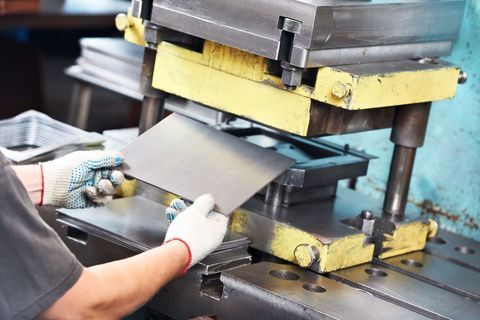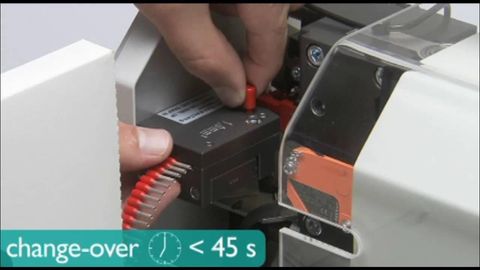Commercial Kitchen Explained: Discover Essential Equipment, Workflow, and Best Practices
A “commercial kitchen” refers to a food-preparation facility designed to serve food at scale—such as in restaurants, catering services, hotels, institutional dining (schools, hospitals) or shared kitchen spaces. Unlike a home kitchen, a commercial kitchen is organised around efficiency, hygiene, durability, and compliance with food-safety and operational standards.
The need for commercial kitchens arises because preparing large quantities of food reliably and safely demands specialised layout, equipment, workflow and staff coordination. Key elements include durable surfaces, stainless-steel worktops, industrial ovens and ranges, high-capacity refrigeration, ventilation systems, dish-washing zones, storage zones and often separate preparation areas for raw and cooked foods. The goal is to streamline operations, support staff productivity, handle high volumes, and maintain food-safety.

Importance – Why this topic matters today, who it affects, and what problems it solves
Understanding commercial kitchens matters for several reasons:
-
Food service industry growth: With more dining-out, delivery, cloud-kitchens and institutional catering, the demand for well-designed commercial kitchens is high.
-
Safety and hygiene: Poor kitchen design or workflow can lead to cross-contamination, inefficient operations, foodborne illness, spoilage and waste. Good practices in equipment, layout and process help mitigate those risks.
-
Operational efficiency: Proper workflow and equipment reduce labour, shorten prep time, lower energy use and improve consistency of output—important for restaurants, hotels or institutional kitchens.
-
Regulatory compliance: Kitchens must meet local health & safety, food safety, fire safety, ventilation and waste disposal regulations. Non-compliance may lead to closures or fines.
-
Sustainability and control: Efficient equipment, thoughtful layout, minimal waste and energy management have become central to modern kitchens. For many stakeholders—chefs, kitchen managers, facility planners, and food entrepreneurs—the topic is essential.
By getting the design, equipment and processes right, kitchens serve their intended volume and quality while maintaining food safety and staff welfare.
Recent Updates – Changes, trends or news from the past year
Several emerging developments are shaping commercial kitchens in 2024-25:
-
There is a growing emphasis on energy-efficient, sustainable kitchen equipment. Appliances with energy-saving modes, reduced water usage, better insulation or smart controls are becoming standard.
-
Smart kitchen technology such as IoT-connected ovens, remote monitoring, smart refrigeration, automated dish-washing, and sensors for inventory or temperature control has increased traction.
-
The shift toward multi-purpose or compact layouts, particularly in smaller footprint kitchens or shared kitchens, is growing. This helps adapt to flexible formats like ghost kitchens or delivery-only kitchens.
-
The focus on health and safety enhancements—better ventilation, ergonomic design, touch-free systems, and improved hygiene surfaces—continues to advance.
-
In India, stricter enforcement of food-safety inspections and regulatory actions has been seen, highlighting the importance of compliance and periodic audits.
These changes reflect the evolving demands on commercial kitchens: more volume, more delivery, tighter regulations, more sustainability, and more technology. Kitchen design and operation are adapting accordingly.
Laws or Policies – How this topic is affected by rules, regulations or government programs in India
In India, commercial kitchens are subject to multiple regulatory frameworks covering food safety, hygiene, licensing and operational standards:
-
The Food Safety and Standards Authority of India (FSSAI) regulates food-business operators under the Food Safety and Standards Act, 2006.
-
Under the FSS (Licensing & Registration of Food Business) Regulations, 2011, food-businesses (including kitchens) must register or obtain a licence depending on scale, and adhere to hygiene, storage, equipment and staff requirements.
-
Hygiene standards require cleanliness, pest control, separate sinks for food and equipment cleaning, proper hand-wash facilities, cleanable surfaces, and segregation of raw and cooked food.
-
Fire safety, building codes, electrical and ventilation norms also apply. Commercial kitchens must meet fire-safety audits and obtain building licences.
-
Waste disposal, water-quality, and equipment sterilisation are regulated, and establishments may be required to display water-quality and sanitation certificates.
Thus, for commercial kitchens in India, compliance spans food-safety, facility design, equipment standards, staff hygiene and operational audits. Ignoring these can lead to regulatory risk, closures or reputational damage.
Tools and Resources – Helpful tools, apps, calculators, websites, templates or services
Below are several tools and resources that can assist in planning, operating or managing commercial kitchens:
-
FSSAI portal for licences, food-safety guidance, and templates.
-
Food hygiene and kitchen-layout checklists for compliance readiness.
-
Temperature and humidity monitoring systems for refrigeration and storage.
-
Inventory management software tailored for food service operations.
-
Energy-use calculators for kitchen equipment to estimate savings.
-
Kitchen-layout CAD or 3D-design templates for modelling workflow zones.
-
Staff-training modules for food handlers focusing on hygiene and cleaning routines.
-
Shared kitchen platforms or “kitchen incubators” for entrepreneurs seeking flexible kitchen space.
These tools enable more efficient planning, monitoring and management of commercial kitchens—helpful whether in large operations or smaller catering setups.
FAQs – Frequently asked questions with clear and factual answers
Q1: What are the key zones in a commercial kitchen layout?
Typical zones include receiving and storage (dry, refrigerated, freezer), preparation (raw and washed food), cooking and oven area, plating or service area, dish-washing and sterilisation zone, waste disposal, and staff hygiene area. Proper separation reduces contamination risks and improves workflow.
Q2: How often should equipment like refrigeration or hoods be maintained?
Regular preventive maintenance is recommended—monthly cleaning of hoods and filters, quarterly inspection of refrigeration seals, and annual checks for major systems. Smart equipment may provide alerts or monitoring. Keeping maintenance records helps with compliance.
Q3: How can a kitchen reduce energy and water usage?
Strategies include:
-
Using energy-efficient or induction cooking appliances.
-
Installing sensor-based lighting and water controls.
-
Recovering heat from exhaust systems.
-
Monitoring dish-washing water consumption and reusing where appropriate.
These steps support sustainability and improve long-term efficiency.
Q4: What are simple hygiene practices for staff in a commercial kitchen?
Essential practices include washing hands thoroughly before food handling and after breaks, wearing clean uniforms and hair covers, avoiding jewellery, using colour-coded boards for raw and cooked food, and sanitising surfaces and utensils between uses. These measures maintain hygiene and prevent contamination.
Q5: How does one choose between large equipment and modular equipment?
The decision depends on food production volume, menu complexity, available space, and flexibility needs. Modular or multi-purpose equipment—such as combination ovens that steam and roast—saves space and adapts to changing menus. This flexibility suits both cloud kitchens and traditional restaurants.
Conclusion
A well-designed commercial kitchen is more than a room with ovens and refrigerators—it is a carefully planned ecosystem where equipment, workflow, staff practices, hygiene controls, and maintenance protocols come together. Given today’s demands for food-safety, sustainability, and efficiency, attention to design, equipment selection, and process discipline is essential.
Recent trends such as smart technology, multi-purpose appliances, and energy-efficiency are reshaping how kitchens operate. In India, regulatory compliance under the FSSAI and related standards is not optional—it is a foundation for responsible operations. By leveraging modern tools and following best practices in workflow and hygiene, commercial kitchens can deliver consistent quality, maintain safety, and adapt for the future.






